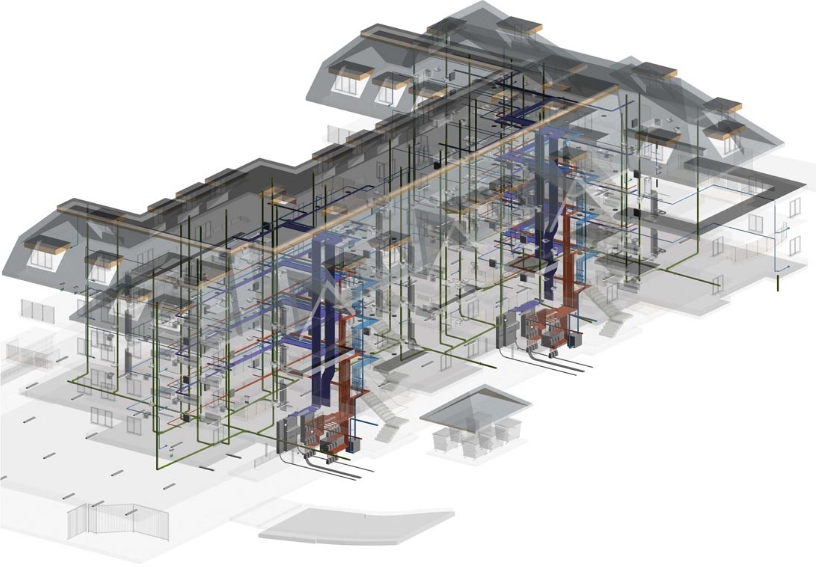How does BIM affect design efficiency?
Technology is changing the way buildings, and infrastructure is designed, built, and operated. And it helps improve workflow, improving the design, and operational efficiency throughout the lifecycle of buildings. Basically, this can be considered as a virtual 3D model of the building with all components: bricks, mortar, roofing, lighting, furniture… all specified in the BIM model. All individuals and organizations collaborating in the design and construction of works can use the data in the BIM model, through which it is possible to analyze the price, energy, construction time, and construction and maintenance methods. The entire working process will be based on this sharing of information, which is always updated and supplemented continuously throughout the working process, from the time of sketching to the time the project is completed. For the same reason, BIM can also be considered as “Building Information Management”. Existing 2D design processes have become obsolete with the arrival of BIM. For the old way of doing things, the transfer of information from the design team to the construction team was also a problem, every small edit will affect many other drawings, and all must be corrected. manually. All data does not have a uniform and automatic association, so it is extremely difficult to update and supplement, especially when it is difficult to detect conflicts in the work. The lead to errors and delays in construction is extremely large.

The Origin of BIM The reason BIM is offered at the present time is very simple – it is due to the evolution of technology. From the era of architects’ drawings on paper to the era of CAD (Computer Aided Design) with more accurate and easier-to-edit electronic drawing boards. And then, thanks to the growing power of hardware and computer graphics, facilitated the development of CAD-3D modeling. The software was able to simulate the smallest details of the building with high-precision 3D graphics, combined with the BIM process to give full information models to maximize support for all. stages of the development of a construction project. With BIM, once the information is set correctly, construction becomes faster, more accurate, and less costly. That is the reason why BIM is becoming a new trend and almost a mandatory standard in the construction industry all over the world. In Vietnam, according to the government’s roadmap, “BIM” will gradually become a standard in construction works, which is one of the important solutions to approach the upcoming industrial revolution 4.0 in the construction industry. . source: onecardvietnam


 Khmer (Cambodia)
Khmer (Cambodia)



